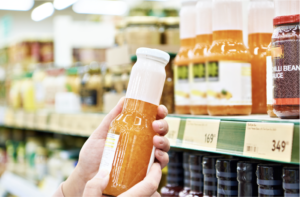Rising Stars and their Marketing
Europe and Latin America are promising hosts for small brands to grow, as are household categories and categories with a high PL share. We now turn to activities which differentiate these upcoming brands from their peers that are not on the rise.
- Rising stars launch fewer new products over three years than other brands, but they are better able to translate their innovation activity into sales. 19% of their volume comes from new products, whereas launches from non-rising brands only account for 11% of sales.
- Rising stars are priced similarly to their non-rising peers. They increased their average price level compared with their peers but also promote slightly more.
- Retailers are important for upcoming brands: On average they experience a 14% increase in distribution whereas retailer presence for comparably small brands remained the same.
- Rising brands added more SKUs to their assortment than their competitors. On average, the assortment change for rising stars is +4 SKUs, versus +2 for all other brands.
Rising stars outperform their peers in share from new, in getting higher retailer presence, and adding more SKUs. Is this strategy sustainable? Will they continue to grow? Will these rising stars become even more dominant in some years or will they be replaced by new upcoming brands?
Our analysis is based on 14,825 brands across 31 countries and 81 categories. To qualify as a “rising star” a brand needed to claim at least 0.5% (but below 5%) in relative penetration in 2013 and to grow this number by at least 50% and at least 1 penetration point over the next three years.
















































































































































































































































































































































































































